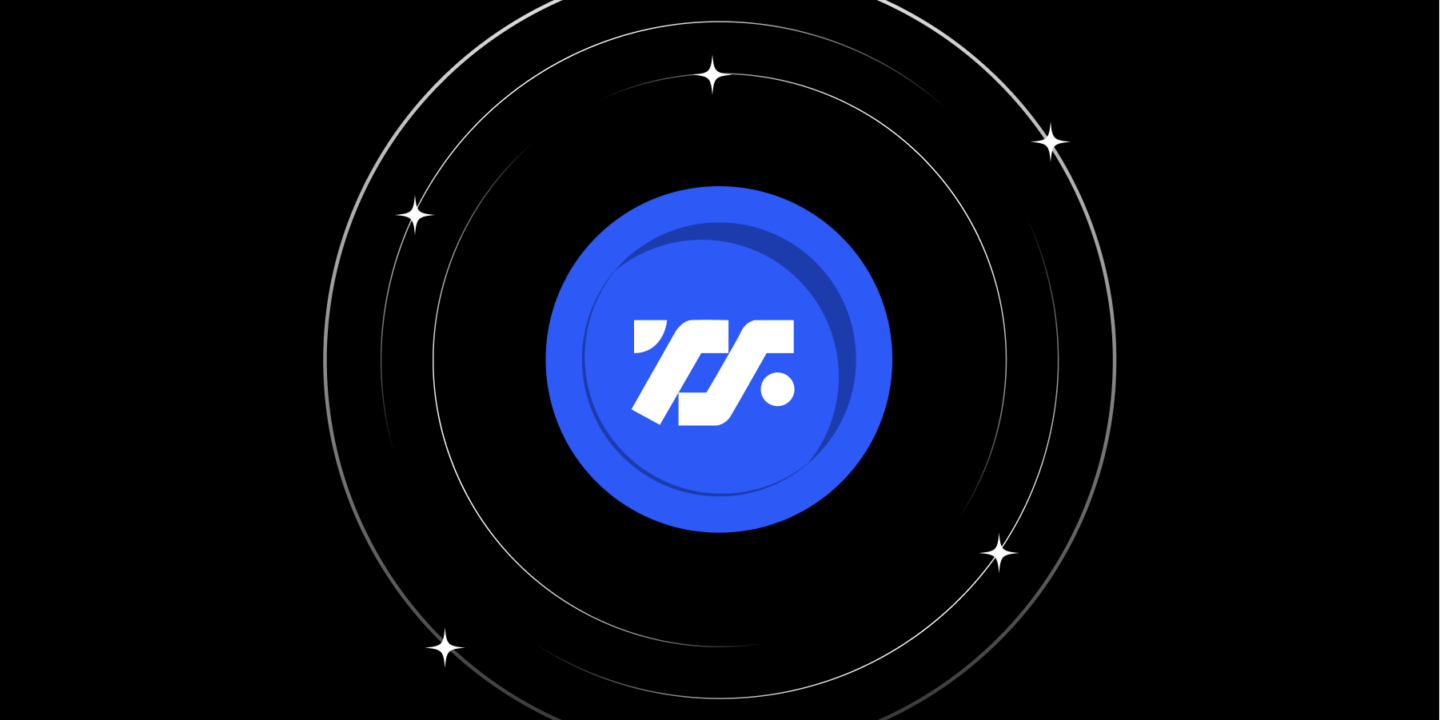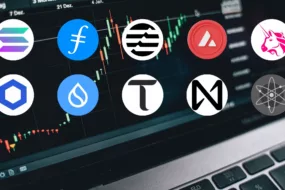
Recently Kunal Shah, founder of Cred, said if someone who was living their prime about 100 years ago met us, they’d probably think that we are gods. We can fly around, talk to anyone while watching them, travel to space, and almost fit a device in our brains to control stuff around us. This was just unimaginable a few decades ago. Now compare that to the financial infrastructure about 60 years ago. Honestly, nothing much has changed for this domain.
Despite all the technological innovation at our disposal, financial systems are still buggy, slow, and far from real-time settlement. If all this doesn’t make sense, try buying a stock off the market in your country and watch it get credited to your demat account after two complete days. But then, we saw the rise of blockchain technology which could solve this once and for all with DeFi. TrueFi is one of the many DeFi applications making traditional finance better with blockchain.
But what is TrueFi? How does it work? Well, you are about to find out.
What Is TrueFi?
TrueFi is the first decentralized, uncollateralized borrowing and lending marketplace. Users can get into uncollateralized P2P borrowing and lending using the platform, allowing people with surplus capital to earn a yield in the form of interest and people who want to borrow with access to high liquidity.
The proof of the pudding is in its numbers. Since its evolution, TrueFi has generated almost $2Bn in collateral-free loans and helped lenders generate a combined income of $40Mn.
In 2021, the protocol switched from catering to only crypto native borrowers and lenders and extended their offerings to emerging market investing, fintech financing, real estate investing, and gig worker lending.
How Does TrueFi Function?
TrueFi is a hybrid platform- a DeFi and CeFi protocol for uncollateralized lending. These loans are only available to institutions that pass rigorous credit checks, but once that process is complete, TRU token holders vote to approve them. They start taking on these short-term loans, and then that is where the real benefits come into play for TrueFi stakers and lenders.
TrueFi fills an important missing piece of the DeFi puzzle, and that’s uncollateralized lending. Most borrowers in DeFi have to provide collateral that’s around three times of what they want to borrow, so if you want to borrow $100, you need to deposit $300 worth of crypto.
You could deposit less than that, but then with volatility, you run a higher risk of liquidation. Collateralized loans are still beneficial because you don’t have to sell your cryptos to gain liquidity which would then be a taxable event, limiting your upside potential.
However, if you want to take out a million-dollar loan or a $25 million loan, do you really want to lock up $3 million or $75 million dollars worth of collateral? Wouldn’t you want to use that collateral for other purposes that can generate yield? This is where TrueFi comes in.
1. Lenders
From a retail investor to an institution, anyone can play the role of a lender on TrueFi to earn higher than usual interest on their lent amount. The real power of TrueFi lies in the fact that it offers a wide variety of asset types to invest in. As a result, it offers the most competitive risk-adjusted earnings. Think of it as investing in a bond-based product. It is technically lending, but then you are simply investing.
To give it a shot, you can download the TrueFi app, research different pools available for investing and make a selection based on your return preference and risk ability. Portfolio managers on TrueFi can restrict certain investors based on legality etc. Therefore, TrueFi also supports proof of identification.
Coming to the best part now. TrueFi allows lenders to exit their positions at any point in time. There are multiple ways to achieve this. Although some pools require a minimum lock-in, TrueFi’s automated lines of credit (ALOC) allow lenders to exit the pool for a small exit fee. Once exited, the unutilized capital swaps the lender’s loan in the pool. Lenders are also free to sell their loan tokens on a decentralized exchange like Uniswap.
As discussed above, the DAO (TRU token holders) decides if a business/asset can be loaned or not. In case of a default, 10% of the staked TRU is used to protect lenders.
Next, the TrueFi SAFU may use its reserve funds to offer affected lenders further coverage. TrueFi also has the authority to pursue collections against defaulted borrowers.
2. Borrowers
A rigorous creditworthiness check is applied to applicants who want to borrow from TrueFi. As a part of this check, their on-chain and off-chain activity, asset exposure, leverage, and performance history are evaluated. Once a borrower is declared as credit-worthy, TRU holders decide whether to accept or reject their loan application.
In case they accept it, the loan is listed on the marketplace from the pools maintained by the DAO at a rate set by the market (and considering the credit score)
From a borrower’s perspective, TrueFi is fast. Usually, capital is available on the same day once the borrower is approved. Also, it requires no capital lock-up, hence maximizing efficiency.
3. Portfolio managers
TrueFi also offers an opportunity for fund managers to take their business on-chain. It offers the best of DeFi and institutional finance to these managers as they can tap into global liquidity 24/7 while enjoying the cost savings and transparency of a fully on-chain system.
TrueFi is also as feature-rich as any web2 institution. For example, fund managers have total control over lender selection in terms of KYC, portfolio strategies, rates, and fees.
Portfolio managers also require community approval before their portfolios can be listed on TrueFi. However, since TrueFi uses open-source infrastructure, portfolio managers can also simply use TrueFi’s smart contracts to launch their own portfolios without needing to go through TrueFi directly.
Today, TrueFi’s portfolio managers use DeFi liquidity to allocate capital towards growing the Latin American fintech sector, investing in emerging markets, backing crypto mortgages, and more — all while generating competitive, diversified returns for TrueFi’s lenders.
TRU Token – An Overview
TRU token lies at the heart of TrueFi. TrueFi being partly decentralized, often goes back to the token holders to take their input on some key decisions and milestones.
To achieve this, TrueFi uses a hybrid DAO model. While it has a dedicated workforce to look after on-chain activities like tax filings and legal activities, TRU token holders can use their holdings to vote.
TRU stakers form the governance structure of the protocol and also happen to be the first line of defense against defaults. (We discussed above how 10% of TRU tokens can be used in case of defaults)
What Does the Future Hold for TrueFi?
Products like TrueFi typically have a long-term vision, their hybrid on-chain + off-chain approach sets them apart from their competitors, that are usually providing overcollateralized loans. Over the coming years, TrueFi aims to achieve integrations and collaborations with more institutions.
1. Growing institutional adoption
TrueFi continues to bring in the controls of institutional finance along with improvements powered by blockchain technology. TrueFi is capable of attaching liquidity from fund houses and family offices while addressing trust issues.
Upcoming features from TrueFi include tranching that allows institutional investors to select their risk-return profile for a given portfolio. Also, capital formation periods allow the testing of market interest in a financial opportunity before putting capital at risk.
In the future, TrueFi will also introduce institutional dashboards for investors and managers to make smart decisions.
2. Deepening DeFi integrations
Next up, TrueFi is exploring compatibility with the ERC-4626 standard. This will make the loans and portfolios composable with other DeFi opportunities. Corporate debt and credit can be included in the offerings of the protocol due to this progress.
At the same time, TrueFi is publicly working with major DAOs and protocol partners like MakerDAO, FRAX, and dYdX on becoming a preferred partner for yield and DEX liquidity, possibly bringing hundreds of millions of dollars into the protocol over the next year.
Given the future prospects of TrueFi and the proposition it brings to the non-crypto, real-world use cases, it has a promising future.
FAQs
1. Is TrueFi a good investment?
One should always invest only after considering their risk appetite. With the bears engulfing the market, it is time to explore real-world use cases of blockchain technology outside the hype. TrueFi seems to fit that bucket where it is actually trying to enhance the existing systems using blockchain.
2. How many TrueFi are there?
TrueFi is one of its kind protocol with various players coming together to make it work. The ecosystem includes lenders, borrowers, and portfolio managers. Apart from them, there are TRU token holders that form the governance layer of the protocol.
3. Will TrueFi go up?
If price predictions were to be believed, there is a significant upside in TrueFi. However, we are in the middle of a bear market as we speak. Therefore, it would not be apt to bet on a single protocol. Rather, one could diversify their investments between debt, equity, and cryptos at this point.




